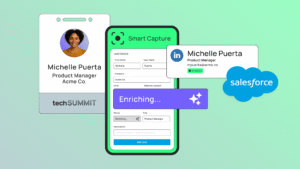
Introduction – Why Event Management Needs a Rethink
A recurring theme we’ve heard throughout the year from universities, nonprofits, and teams of all sizes is the urgent need for an event solution that actually works. Not just something that helps manage event logistics, but a system that makes it easier to communicate with attendees, send timely reminders, and track engagement without relying on spreadsheets or manual processes.
Many teams have shared the same story: it’s hard to keep up. From missing follow-ups to scattered attendee data and challenges scaling programs beyond a single department, managing events has felt more reactive than strategic.
That’s exactly the kind of friction the University of Arizona set out to solve. In this spotlight, you’ll learn why they chose to invest in a seamless events experience, how their journey has unfolded over the past year, what kind of impact they’ve seen so far, and where they’re headed next. You’ll also hear about the unique timing of their rollout: implementing a new events system at a moment when nearly everything had shifted online, and what it took to support a whole new kind of engagement in a rapidly changing world.
The Challenge – Scaling Events Without Losing Connection
The University of Arizona hosts a wide variety of events, student orientation sessions, virtual admissions meetings, alumni webinars, career services panels, and more. But their existing systems weren’t built to support this kind of scale. Teams were relying on a mix of tools to handle everything from registration to communications, which created extra work and left gaps in the attendee experience.
Tracking participation across departments was inconsistent, reminders were manual (and sometimes missed), and event reporting often required data cleanup just to get usable insights. With so many moving parts, staff found themselves spending more time organizing events than actually connecting with their audiences.
The Turning Point – Building a Unified Experience
Recognizing the need for a smarter, more integrated solution, the university began looking for a platform that could bring everything together—registration, communication, attendance tracking, follow-ups, and analytics, in one place. Just as importantly, they wanted a tool that could align with their CRM and scale across departments without heavy tech support.
The timing wasn’t easy. The project kicked off while higher ed institutions everywhere were rapidly pivoting to virtual events. But that urgency created clarity: if they could make the system work in this moment, they could make it work long-term.
What Changed – A Year of Growth and Real Results
Over the past year, the University of Arizona has seen significant improvements in how they plan and execute events. Teams have cut down on setup time, improved follow-up communication, and gained clearer visibility into event outcomes.
More importantly, the student experience has improved. Attendees receive timely information, confirmations, and reminders. Event organizers spend less time troubleshooting logistics and more time focusing on content, outreach, and impact.
What’s Next – Growing Across Campus
With early success behind them, the university is now expanding the use of the platform across new departments and use cases. Teams supporting academic advising, student success workshops, recruitment campaigns, and alumni engagement are all finding ways to bring their events into the same centralized system.
The goal? To create a consistent and scalable experience across the entire institution, one that reduces friction for staff, makes participation easier for students, and delivers meaningful insights that help shape the future of engagement.
Conclusion – A New Standard for University Events
For the University of Arizona, event management is no longer a disconnected process. It’s a coordinated, data-driven effort that supports the university’s broader mission to connect, inform, and engage its community. Their story is proof that when the right system is in place, teams can scale events without sacrificing quality and transform the experience for everyone involved.


